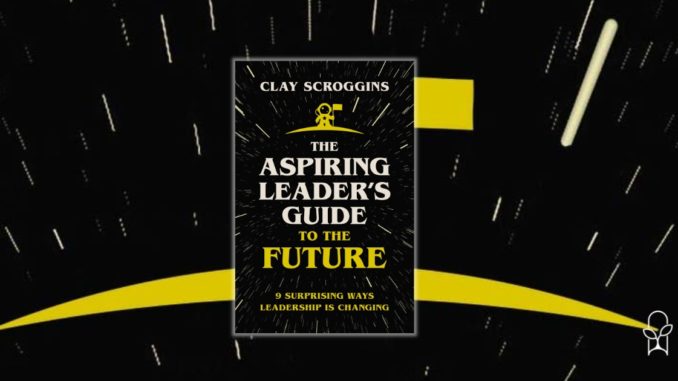
Published by Zondervan on January 11, 2022
Buy on Amazon
Goodreads

You may not hold a position of leadership or think of yourself as a leader. But if you want to create, change, or impact the world around you—even in a modest way—then you're guided by a leader's impulse and shaped by a leader's principles.
You are an aspiring leader.
But the fact is that you've come to this role at a time when leadership—like everything else—is rapidly changing...and too many leaders are addressing the problems of today and tomorrow with the style and substance of yesterday's leadership. We need an update.
In The Aspiring Leader's Guide to the Future, Clay Scroggins (author of How to Lead When You're Not in Charge) explores nine new principles of leadership that will help leaders adapt to a changing world and work culture, such as:
Today's leaders lean into vulnerability.Today's leaders develop relationships primarily around trust.Today's leaders celebrate the successes of others.These may seem like counter-intuitive principles, but they provide a new way forward for leaders and teams and will prove versatile in the event of change and durable in the face of conflict. With humor and a pastor's candor, Clay will show you why the old ways need updating and what developing new leadership skills could look like for your future.
To be clear, the author of this book does not know the future. If he did, he would have used his talents on sports betting or stock trading. What he does know is that yesterday's leadership axioms are today's myths and what that means. The way forward requires an understanding of the past, a conviction of what's at stake today, and a vision for how different tomorrow will be.
You don't have to be a young entrepreneur with big dreams or someone looking to land a leadership role just to be considered an aspiring leader. You are one now. And by developing your skills for the future, you can become today's version of a leader worth following.
Leadership is changing. Accelerated by the pandemic, the work lives and personal priorities of people around the world have shifted and leadership is trying to catch up. With the “Great Resignation,” you hear stories every day of how poor, outdated, or even dehumanizing leadership has led to business failure. In The Aspiring Leader’s Guide to the Future, Clay Scroggins navigates readers through a series of nine surprising ways that leadership is changing—hopefully for the better!
Right inside the inside cover flap, it reads “Go beyond the cliches and myths.” I’m not sure exactly what they have in mind when they say that because The Aspiring Leader’s Guide to the Future is just about as cliched and folksy as it gets. That’s not necessarily a bad thing. Pop leadership has its place. But Scroggins work reads like a high-octane, goofy, surface-level look at leadership that riffs off the style of so many other leadership gurus.
The subtitle of the book talks about nine ways leadership is changing, but that structure never really comes into play in the book—other than having one introductory chapter followed by nine primary chapters. Some of the chapters have good advice—“Conflict never gets easy”—but how is that a change in leadership from the past? Another chapter in entitled “Leaders Never Fail—They Just Have Loads of Expensive Learnings.” Did leaders of the past believe they could fail? Scroggins sets up his book as contrasting the way things have always been done with A New Way™, but it isn’t at all clear these are actual changes in leadership trends.
Integral to the book’s style is Scroggins’ folksy humor and sports/television references. It’s maybe not fair to criticize a book based on something it was actively trying to do, but for me the references fell flat. Most were a distraction from the content, not an addition to it. They led readers away from the intended point instead of deeper into it.
The Aspiring Leader’s Guide to the Future doesn’t give bad advice, it just fails to give good advice with any substance behind it. None of the leadership trends it talks about are at all surprising or even necessarily current trends. Like, maybe if you only had a late-20th century sitcom idea of what leadership was like—think Cosmo Spacely or Mr. Burns—then this may introduce you to new thinking, but otherwise it’s nothing new. Overall, the book comes off as carefully marketed, packaged, and presented but I found it to be, as they might say in Texas, all hat and no cattle.
